The issue of how to get rid of sewer gas smell in bathroom is one that concerns many homeowners and renters alike. Understanding the Causes of the Sewer Gas Smell in the Bathroom involves recognizing that this unpleasant odor usually emerges due to issues within the plumbing system, such as dry p-traps, clogs, or leaks.
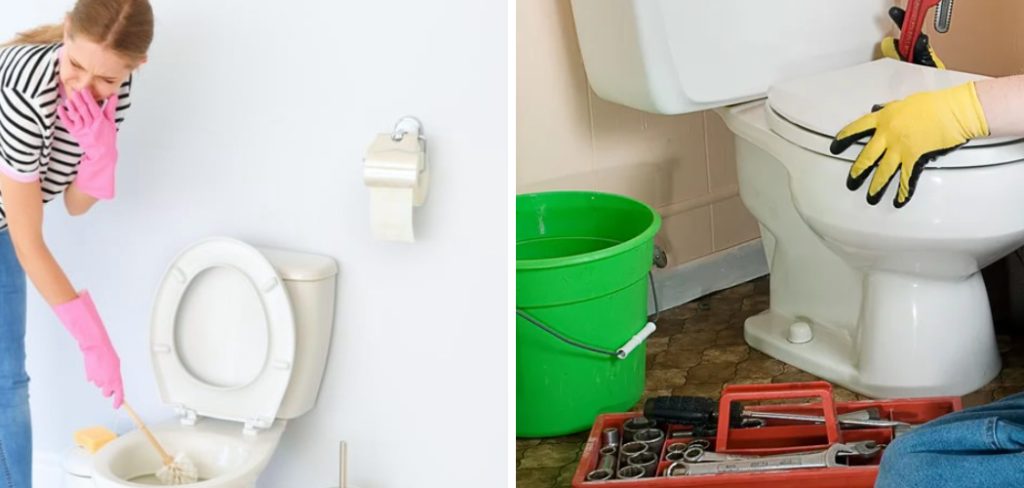
The importance of addressing the issue of health and comfort cannot be overstated; exposure to sewer gas can not only be unpleasant but potentially harmful, leading to headaches, dizziness, or even more severe health risks with prolonged exposure. Consequently, ensuring a fresh and clean bathroom environment contributes significantly to the occupants’ well-being.
Overview of Effective Solutions to Eliminate Sewer Gas Odor will encompass a variety of strategies, from simple fixes like flushing drains to more complex approaches like inspecting and repairing plumbing fixtures. This comprehensive guide aims to provide you with practical solutions to maintain a healthy and comfortable bathroom space, free from the concerns of sewer gas smell.
Identify the Source of the Smell
Identifying the source of the sewer gas smell in your bathroom is a critical first step in solving the issue. This section walks through the primary areas to inspect for potential problems.
A. Check the Toilet Seal for Leaks or Damage
The wax ring seal underneath the toilet base is crucial in preventing sewer gases from entering the bathroom. If this seal is damaged, eroded, or improperly fitted, it can directly source the odor. Regular inspection of the toilet seal for any signs of leaks or damage is essential. If the seal appears compromised, replacing it promptly will mitigate the risk of sewer gas leakage into the room.
B. Inspect the Sink and Shower Drains for Clogs or Blockages
Clogs or blockages within sink and shower drains slow down water drainage and trap sewer gases within the pipes, allowing the gas to seep back into the bathroom. Hair, soap scum, and other debris are common culprits that lead to blockages. It’s advisable to regularly clear out these drains to ensure they are free of obstructions that could be capturing unpleasant odors.
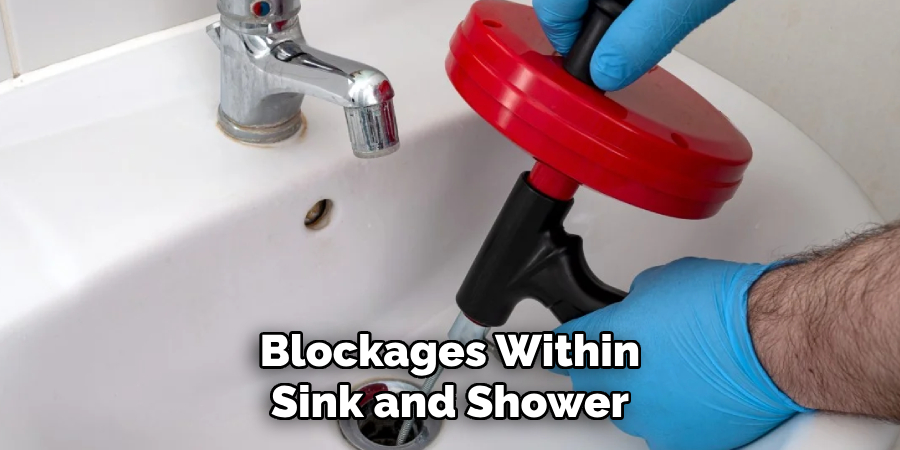
C. Examine the Sewer Vent Pipe for Blockages or Damage
The sewer vent pipe, extending through the roof, allows sewer gases to escape the plumbing system safely. However, if leaves or bird nests block this vent or have been damaged, these gases could back up into your home instead.
Inspecting the vent pipe for any obstructions or signs of damage is crucial. If any blockages are found, they must be cleared to allow the gas to vent out appropriately, thereby eliminating the source of the smell in the bathroom.
Flush Drains and Clean Fixtures
Regular flushing and cleaning of sink and shower drains are strong defenses against the buildup of unpleasant odors in the bathroom. This section guides you through straightforward techniques for maintaining clear and odor-free fixtures.
A. Run Water in Sink and Shower Drains to Flush out Build-Up
The simplest step to begin with is routinely running hot water through your sink and shower drains. This action helps to flush away any initial buildup of soap scum, hair, and other debris that could potentially block the flow and cause odor issues. A few minutes of a steady hot water flow once or twice a week can greatly aid in maintaining clear pipes.
B. Clean Sink and Shower Fixtures with Vinegar or Baking Soda
For a more thorough cleaning, natural cleaners like vinegar or baking soda prove highly effective in breaking down odors and buildup without the harshness of chemical cleaners. Pour half a cup of baking soda down the drains, followed by a cup of white vinegar.
The resulting chemical reaction can help dissolve stubborn blockages and neutralize odors. After letting it sit for an hour, flush the drains with hot water to clear out the residue.

C. Use a Drain Cleaner to Remove Any Lingering Odors
A commercial drain cleaner can be used as a last resort for persistent odor issues. These products are designed to tackle tougher clogs and odors but should be chosen carefully to avoid potential damage to your plumbing. Always follow the manufacturer’s instructions for use to ensure safety and effectiveness. However, it’s recommended to try natural cleaning methods first before resorting to chemical solutions.
Maintaining a regular cleaning routine for your drains and fixtures is crucial in preventing the development of sewer gas smells. These simple steps can make a significant difference in keeping your bathroom fresh and odor-free.
Check the Toilet Seal
Ensuring that the toilet seal is intact is paramount in preventing sewer gas smells. This section provides a detailed approach to inspect and address any issues with the wax ring seal underneath the toilet.
A. Inspect the Wax Ring Seal Underneath the Toilet Base
The integrity of the wax ring seal is crucial for creating a watertight and gas-tight seal between the toilet and the plumbing system. To inspect the seal, you may need to remove the toilet from its base, which requires turning off the water supply, draining the toilet, and unscrewing it from the floor. Look for signs of damage, erosion, or an improper fit. A compromised seal is often the culprit behind the infiltration of sewer gases into your bathroom.
B. Replace the Wax Ring if Damaged or Worn Out
If, upon inspection, the wax ring shows any signs of deterioration or damage, it is essential to replace it immediately. Wax rings are inexpensive and readily available at hardware stores. Select the correct size and shape to fit your toilet and drain properly. When replacing the ring, ensure the toilet and floor surface are clean to create a secure and effective seal.
C. Ensure Proper Installation and Sealing of the Toilet
After replacing the wax ring, carefully reinstall the toilet on the drain, applying even pressure to ensure a good seal with the new wax ring without damaging it. Tighten the bolts gradually, alternating sides to press down evenly, but be cautious not to overtighten, as this can crack the toilet’s base.

Once secured, reconnect the water supply, flush the toilet several times, and check for leaks around the base. Proper installation and sealing are crucial to prevent future sewer gas leaks and maintain a fresh bathroom environment.
Maintaining the integrity of the toilet seal is a fundamental step in combating sewer gas smells in your bathroom. Regularly inspecting the wax ring, replacing it when necessary, and ensuring a proper installation can help keep your bathroom odor-free and hygienic.
How to Get Rid of Sewer Gas Smell in Bathroom: Ventilate the Bathroom
Proper ventilation is critical to maintaining a fresh and odor-free bathroom environment. Ensuring efficient air circulation can significantly reduce moisture and odor accumulation.
A. Open Windows and Doors to Increase Air Circulation
One of the simplest yet most effective strategies to enhance airflow is by regularly opening windows and doors, weather permitting. This action allows fresh air to enter and stagnant air to exit, quickly reducing the intensity of any bad smells. Even a few minutes of open windows and doors can make a noticeable difference in air quality.
B. Use Exhaust Fans to Remove Odor and Moisture
Exhaust fans play a pivotal role in bathroom ventilation. Ideally, the fan should be turned on during and for at least 20 minutes after showers or baths to extract moisture-laden air, contributing to odor problems and promoting mold growth. Installing a timer switch for the fan can help ensure it runs long enough to be effective without forgetting to turn it off.

C. Consider Using Air Purifiers or Odor Absorbers
Consider using air purifiers or odor absorbers for additional support in maintaining a fresh bathroom atmosphere. Air purifiers equipped with HEPA filters can capture particulate matter, while those with activated carbon filters are particularly effective at removing odors.
Alternatively, placing natural odor absorbers like activated charcoal, baking soda, or essential oils can also help neutralize unpleasant smells, offering a cost-effective and eco-friendly solution.
How to Get Rid of Sewer Gas Smell in Bathroom: Seal Cracks and Gaps
Preventing sewer gas smells isn’t just about internal maintenance; it’s also crucial to seal external entry points. This section focuses on detecting and sealing cracks and gaps around plumbing fixtures and in the bathroom structure to further safeguard against odors.
A. Check for Cracks or Gaps Around Plumbing Fixtures
Regularly inspect areas around sinks, toilets, and showers for any signs of cracks or gaps where sewer gas could escape. These vulnerabilities often arise from shifting foundations or the natural settlement of the house. Pay particular attention to the places where plumbing pipes enter and exit the walls, as these are common sites for gaps to develop.
B. Seal Cracks and Gaps with Caulk or Sealant
When identifying fissures, promptly seal them with a high-quality caulk or sealant designed for bathroom use. These products are specifically formulated to be waterproof and mold-resistant, making them ideal for humid environments. For larger gaps, you may need to use a foam sealant or a plumber’s putty before applying the caulk for a more secure seal.
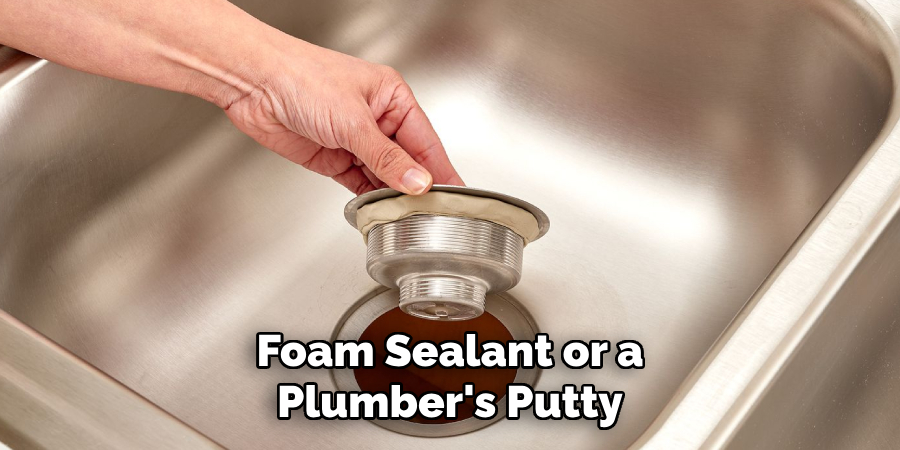
C. Ensure Proper Sealing Around Baseboards and Walls
The baseboards and where the walls meet the floor are also potential sources for odor leaks, especially in older bathrooms. Examine these areas closely for any signs of gaps or wear.
Applying a bead of silicone caulk can effectively seal these spaces, preventing moisture intrusion and the entry of sewer gases. This step not only contributes to odor control but also to the overall moisture management in the bathroom.
By diligently checking for and sealing any cracks and gaps, you can further reinforce your bathroom against the intrusion of sewer gases, ensuring a cleaner, fresher environment. This preventive measure complements the internal maintenance strategies outlined earlier, offering a comprehensive approach to bathroom odor management.
How to Get Rid of Sewer Gas Smell in Bathroom: Inspect the Sewer Vent Pipe
Ensuring that your sewer vent pipe is functioning correctly prevents sewer gas smell in your bathroom. The sewer vent pipe, usually located on the roof, allows sewer gases to escape and helps maintain proper atmospheric pressure in the sewage system.
A. Check the Sewer Vent Pipe for Blockages or Obstructions
Over time, the sewer vent pipe can become blocked by leaves, nests, or other debris, preventing gases from escaping. Regularly inspect the vent pipe for any visible blockages or obstructions. This can typically be done by visually examining the pipe’s opening from the ground or by using a ladder to get a closer look, ensuring safety measures are adhered to.
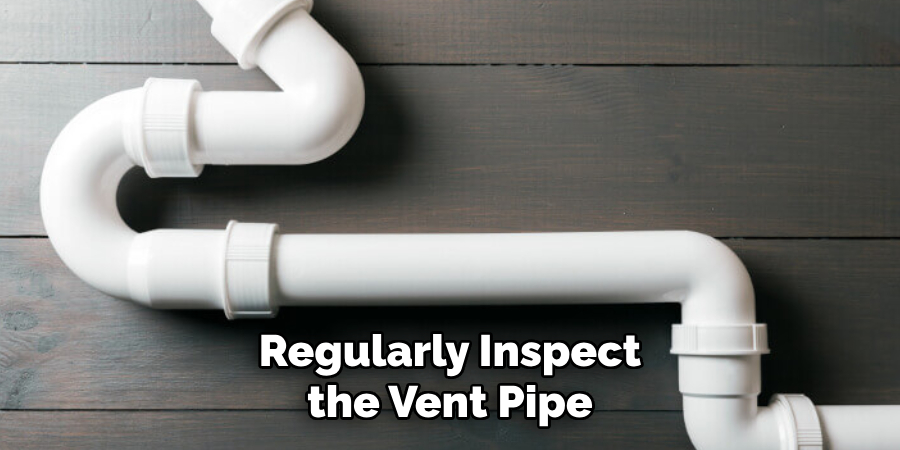
B. Remove Debris or Blockages Using a Plumbing Snake or Auger
If a blockage is detected, carefully remove it using a plumbing snake or auger. Gently guide the tool into the vent pipe to clear the obstruction. For more significant blockages, it may be necessary to consult a professional plumber who has the expertise and proper equipment to safely clear the vent.
C. Ensure Proper Functioning of the Vent Pipe to Prevent Gas Build-Up
Once the blockages have been removed, it is essential to check that the vent pipe is functioning as intended. This can involve listening for the normal airflow and gases, indicating that the system is effectively venting. Regular inspection and maintenance of the sewer vent pipe ensure that sewer gases are safely expelled from your home, significantly reducing the risk of gas build-up and odor in your bathroom.
Address Plumbing Issues
Properly addressing plumbing issues is vital in maintaining a healthy and odor-free bathroom environment. Even minor issues, if left unattended, can lead to significant problems, impacting not only the air quality but also the structural integrity of your home.
A. Fix Leaky Pipes or Faucets Promptly
Leaky pipes and faucets are a nuisance and can contribute to moisture and odor problems in your bathroom. Moisture from leaks can encourage mold growth and attract pests, both of which can exacerbate unpleasant smells. Therefore, fixing any leaks as soon as they are noticed is crucial. For minor leaks, replacing the washer or tightening the fittings might suffice, but for more significant issues, replacing the affected section of the pipe may be necessary.
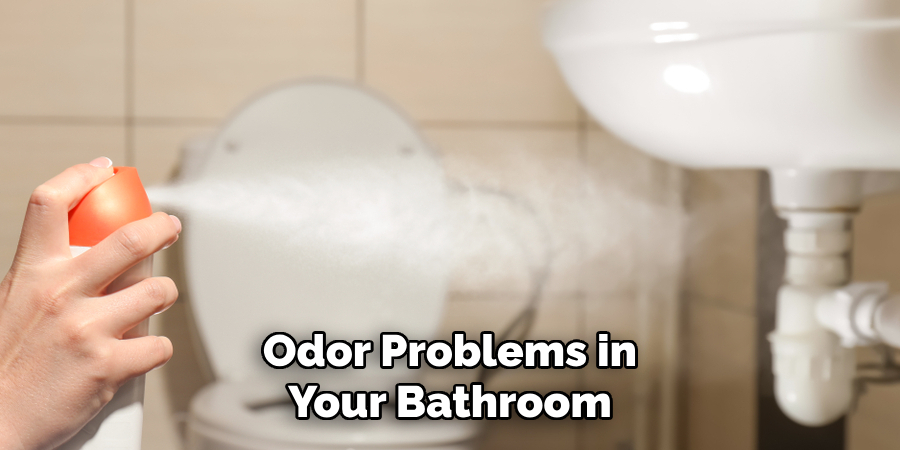
B. Replace Old or Damaged Plumbing Fixtures
Over time, plumbing fixtures can become worn or damaged, leading to decreased functionality and potential leaks. Regularly inspect fixtures such as sinks, toilets, and bathtubs for any signs of damage or wear. Replacing old or damaged fixtures not only prevents leaks but can also improve your bathroom’s overall efficiency and appearance.
C. Hire a Professional Plumber for Complex Plumbing Repairs
Some plumbing issues may be beyond the scope of DIY repairs and require the expertise of a professional plumber.
This includes complex issues like sewer pipe damage, major leaks within the walls, or problems with the main water line. Hiring a professional ensures that the repairs are carried out correctly, preventing further damage and ensuring the longevity of your plumbing system. A licensed plumber can also provide valuable advice on maintaining your plumbing system and preventing future issues.
Use Odor Eliminators
Implementing odor eliminators is a straightforward yet effective strategy to maintain a fresh bathroom environment. Utilizing these products can notably augment your efforts in managing and preventing undesirable smells.
A. Place Odor Eliminating Products in the Bathroom
Various commercially available odor-eliminating products are specifically designed for bathroom use. These can include gel beads, plug-in air fresheners, or automatic spray units. Positioning these products strategically around the bathroom, especially near the source of odors, can dramatically improve the air quality and contribute to a more pleasant atmosphere.
B. Use Natural Remedies Such as Charcoal or Essential Oils
Activated charcoal and essential oils offer an eco-friendly alternative for those preferring natural solutions. Activated charcoal is highly effective in absorbing odors and moisture from the air, making it an ideal choice for bathroom odor control. Similarly, essential oils not only impart a fresh fragrance but can also possess antibacterial properties that help reduce odor-causing bacteria. These can be used in diffusers or mixed with water and sprayed directly into the air.
C. Follow Manufacturer Instructions for Safe and Effective Use
Regardless of the type of odor eliminator chosen, it’s critical to follow the manufacturer’s instructions for safe and effective use. This includes guidance on placement, duration of use, and any precautions to prevent misuse or potential health hazards. Proper adherence to these instructions ensures that the products perform as intended, providing optimal results in maintaining a fresh and inviting bathroom environment.
Regular Maintenance and Inspection
Ensuring the continuous functionality and freshness of your bathroom involves a proactive approach to maintenance and inspection. Regular checks and upkeep can preemptively tackle issues before they escalate into larger, more problematic situations that could impact your bathroom’s hygiene and overall comfort.
A. Schedule Regular Inspections of Plumbing Fixtures and Drains
It’s wise to set a routine for inspecting all your plumbing fixtures and drains. This includes assessing faucets, showerheads, toilets, and sink drains for any signs of wear, leaks, or slow drainage that might indicate a clog. Doing this at least twice a year can help identify problems early on, allowing for timely repairs that prevent more severe issues and odors from developing.
B. Clean and Maintain Fixtures and Drains to Prevent Build-Up
Regular cleaning and maintenance of your fixtures and drains are crucial in preventing the build-up of grime, soap scum, and hair, which can cause clogs and unpleasant odors.
Simple habits, such as frequently pouring hot water down the drains or using a mixture of vinegar and baking soda, can help keep them clear and odor-free. Additionally, cleaning fixtures with the appropriate cleaners can prevent mineral build-up and maintain their functionality and appearance.
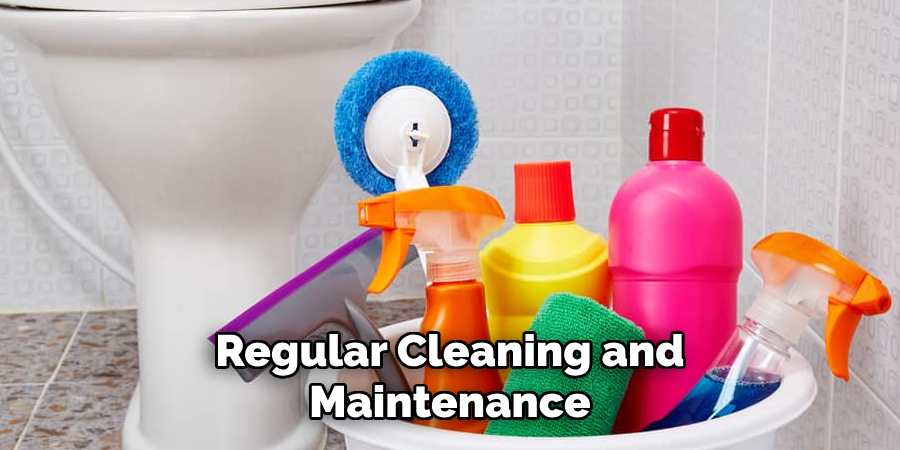
C. Address Any Odor Issues Promptly to Prevent Recurrence
Should any unpleasant odors arise, it’s essential to address them without delay. Identifying and rectifying the source of odors promptly can prevent them from becoming recurring issues. Whether it’s a clogged drain, a need for vent pipe cleaning, or replacing an old fixture, quick action can make a significant difference in maintaining a fresh and pleasant bathroom atmosphere.
Conclusion
Throughout this guide, we have explored comprehensive strategies on how to get rid of sewer gas smell in bathroom, including repairing leaks, replacing old plumbing fixtures, and enlisting professional help for complex issues. Additionally, we’ve discussed the importance of utilizing both commercial and natural odor eliminators, alongside regular maintenance routines to ensure a clean and fresh bathroom environment.
The key to a pleasant bathroom environment lies in immediate fixes and the ongoing commitment to regular maintenance and inspection. Prompt action upon detecting any issue, be it minor leaks or drainage clogs, is crucial in preventing the recurrence of sewer gas smells. By staying vigilant and proactive, you safeguard your bathroom against the challenges that lead to unpleasant odors.
In closing, we wish you success in applying these measures to maintain a fresh and odor-free bathroom. Remember, knowing how to get rid of the sewer gas smell in the bathroom is just the beginning. It’s the diligent application of these solutions and consistent upkeep that will ensure your bathroom remains a clean and inviting space for all.